The Tahoma Traverse
Published on: Wed May 28
A ski descent of the Tahoma Glacier on Mt. Rainier.
Written by Tom Skoog

Tahoma Glacier Ski Descent – May 2025
With more vertical relief than any other peak in Washington and around 30 named ski lines, Mt. Rainier is a paradise for the modern ski mountaineer. Before it becomes an office in July, the mountain is also an early-season playground for the small community of guides in Ashford, Washington.
Most of us roll in around April or May with fresh ski legs and plenty of fitness from the offseason. There’s also less guiding work to go around, and what there is tends to be easier because the glaciers haven’t yet opened up. All of this creates a restless energy, and people start teeing off.
This year alone, I personally knew or heard of guides skiing the Emmons, Ingraham, and Kautz Glaciers, Gibraltar Chute, Success Couloir, Sunset Ridge, Ptarmigan Ridge(!), the Edmonds and Mowich Headwalls, and, as is tradition, a few parties skied 200 feet down Liberty Ridge before bailing upward. (You’ll get ’em next year, guys!)
In such an environment, it’s hard not to get swept up in the spirit of adventure. I always make a point to ski off the top before the grind of summer guiding season sets in. This year, Lucas Cairns, Tim Gibson, and I descended the Tahoma Glacier via the main Tahoma Headwall. It was a special trip because of the setting, my family history and because it marked Tim Gibson’s tenth(!) distinct ski descent of the mountain, in a year when he also became the first person to ski from the summit of all the Cascade volcanoes. Way to go, Tim!
The day started as all great adventures do: with complete disorientation at the sound of my alarm going off at 3:30 a.m. I shambled into the kitchen of RMI company housing and blearily made coffee before Tim and Lucas rolled into the driveway. We talked some shit, dropped my car at the Westside Road, and piled into Lucas’s Subaru, rattling our way up to Paradise.

Along the way, we found a mess of branches blocking the road and decided to set the karmic scales in our favor by clearing both lanes. It felt like the start of a good day.
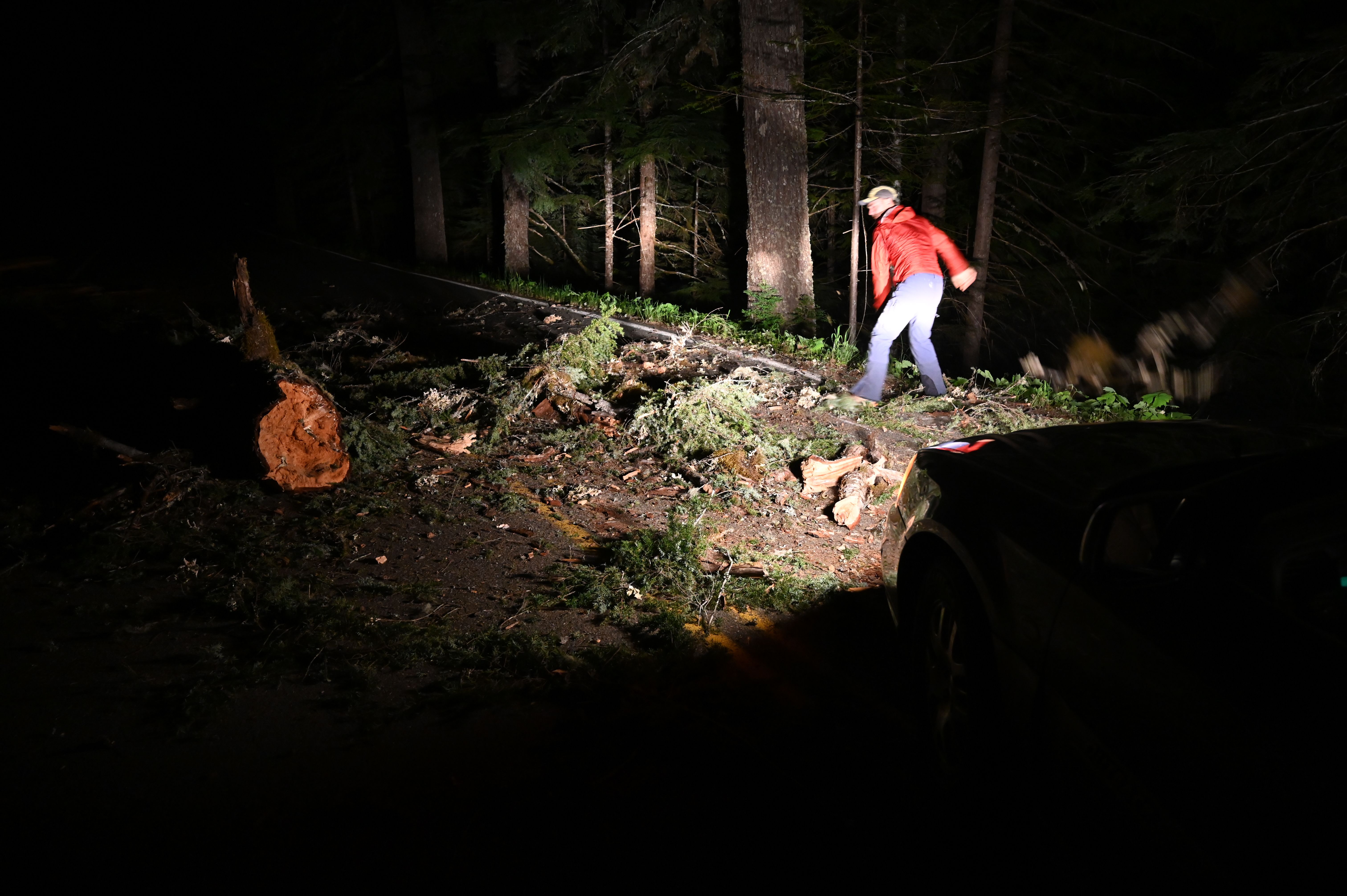
We launched from Paradise around 4:45 a.m. and made smooth time up the Muir Snowfield.
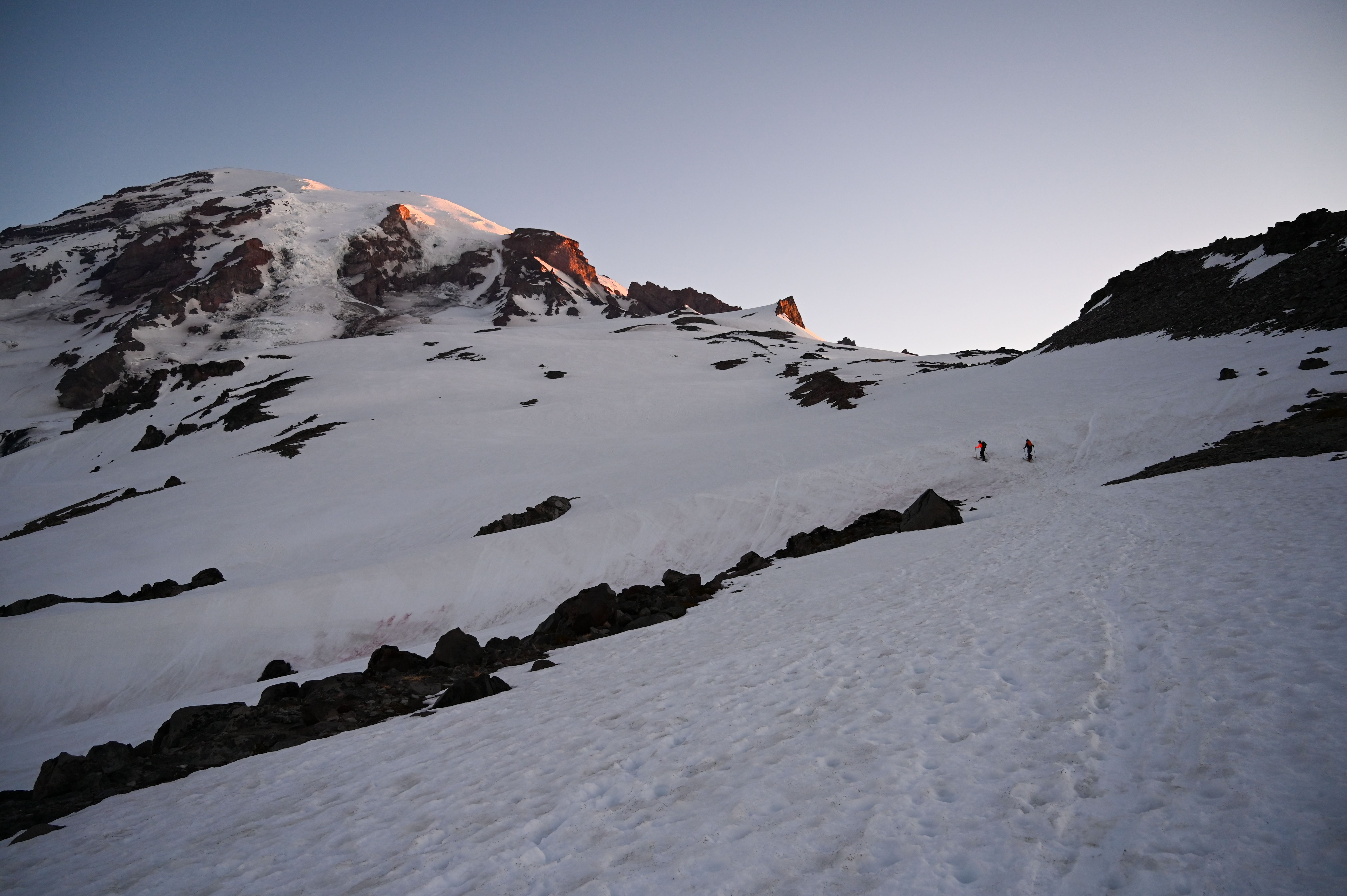
At Muir, we stopped for coffee with a few RMI guides who were up working - big thanks to Casey Grom and Tatum Whatford for the joe! From there, we transitioned to boots and crampons and continued upward.
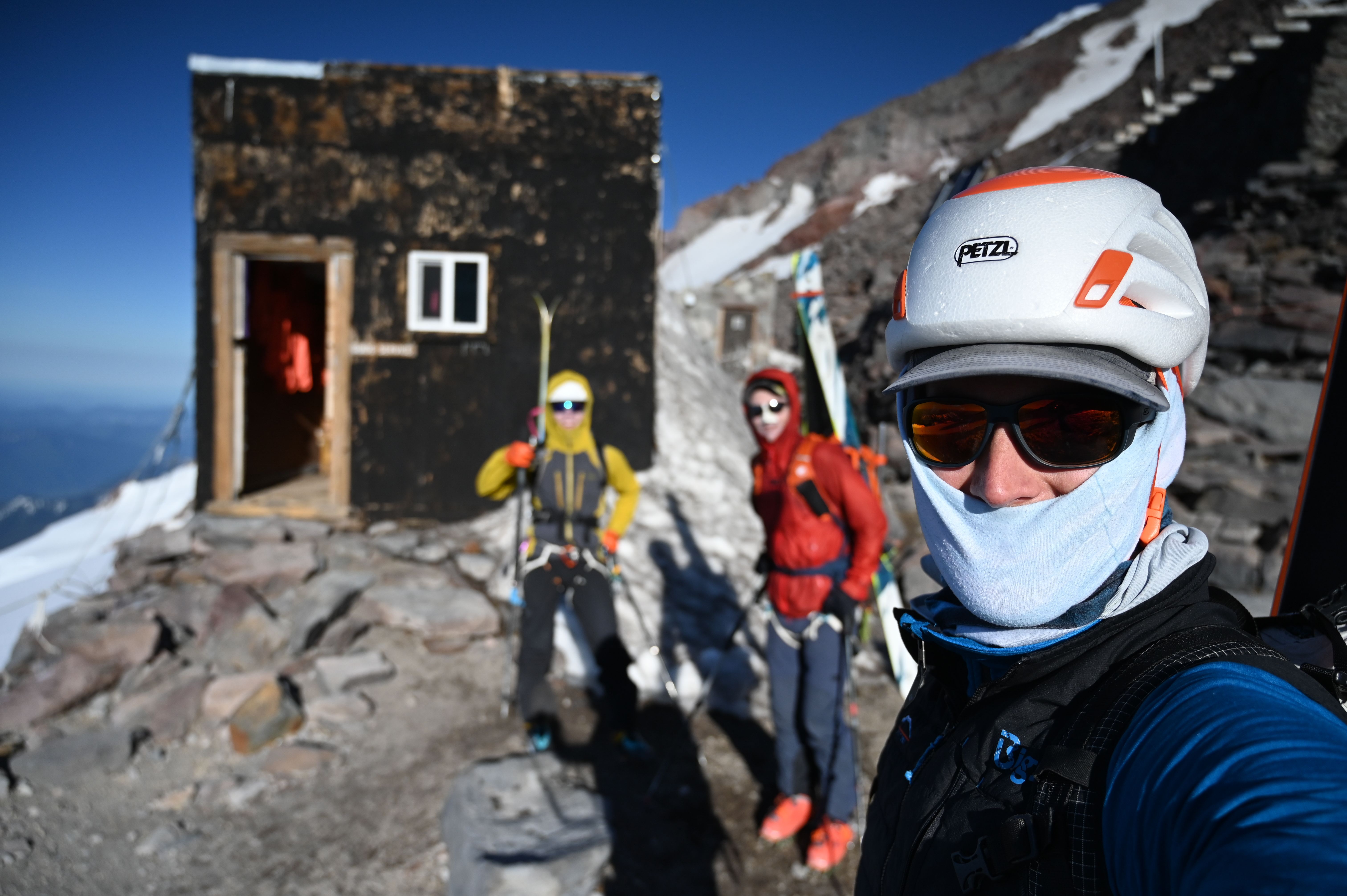
The day was warming quickly, but we seemed to stay just above the elevation where things turned properly hot. We marveled at the scale of an icefall event from mid-May and traipsed up the Disappointment Cleaver (henceforth, “the DC”), still right on schedule.
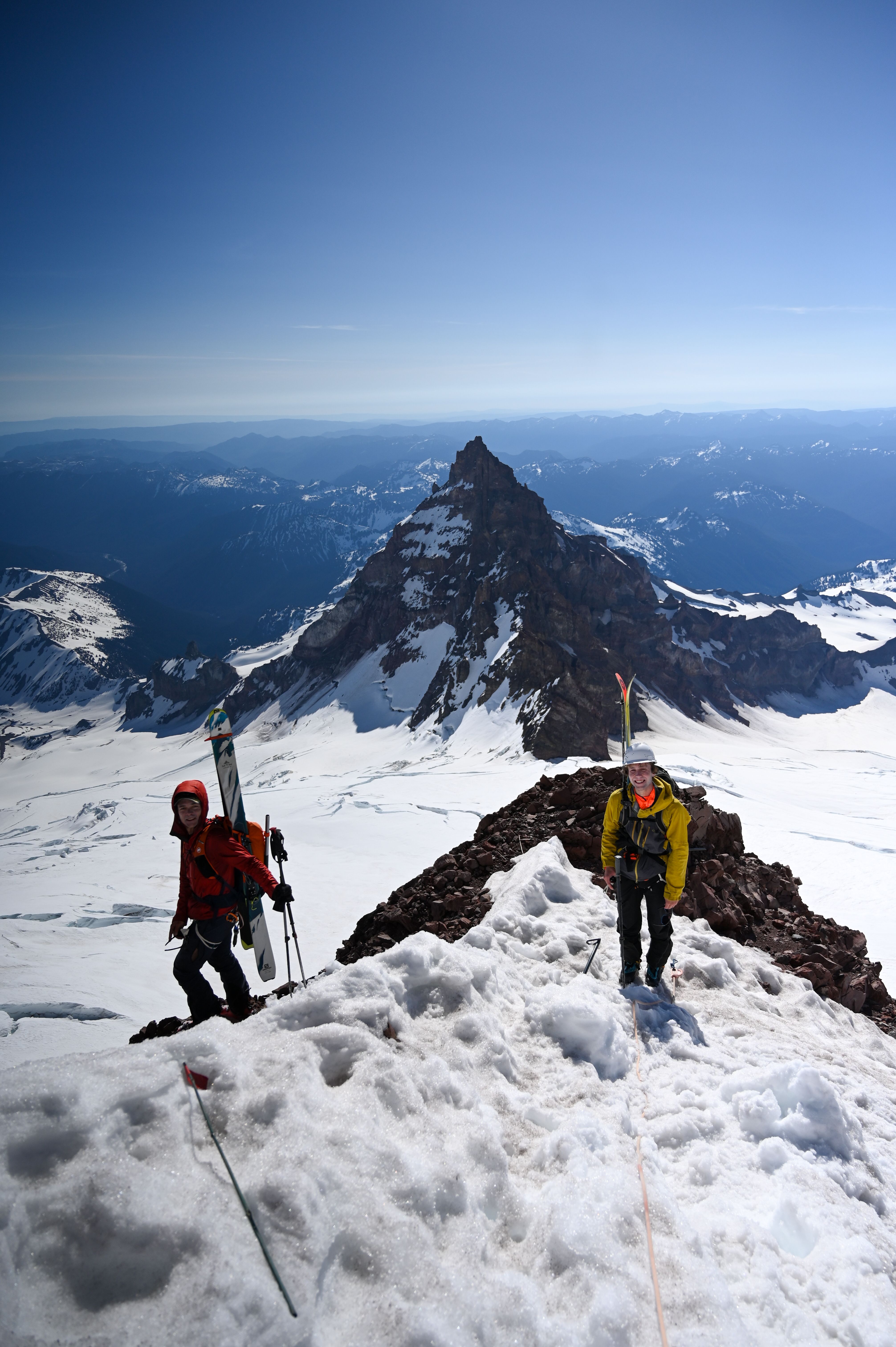
At that point, our perfect day hit its first speed bump. Looking up at the summit, we saw an ominous cloud cap forming. Lenticular clouds - those UFO-looking things - form when fast-moving air hits a stationary obstacle like a ridge or a volcano. The air gets pushed upward, cools rapidly, and if its temperature drops below the dew point, a cloud forms. Because of how they form, these clouds are always windy and wet.

We stopped for a break and made a plan. None of us wanted to ski the heavily glaciated West Side of Rainier top-down without visibility, which meant descending some variation of our ascent route if things didn’t improve. The Ingraham was too crevassed, and the DC itself isn’t typically skied.
In a pinch, we could just walk down and say sorry for trying - but from our current high point, we spotted another option. Between the DC and the Emmons lies a rarely visited panel creatively called the Emmons–Ingraham Glacier. From above, we could see a continuous line weaving around several crevasse complexes and linking back to our ascent route around 11,000 feet. We took photos for reference and dubbed it Plan B. It would be a shame to go for a walk with skis on our backs if we could avoid it.
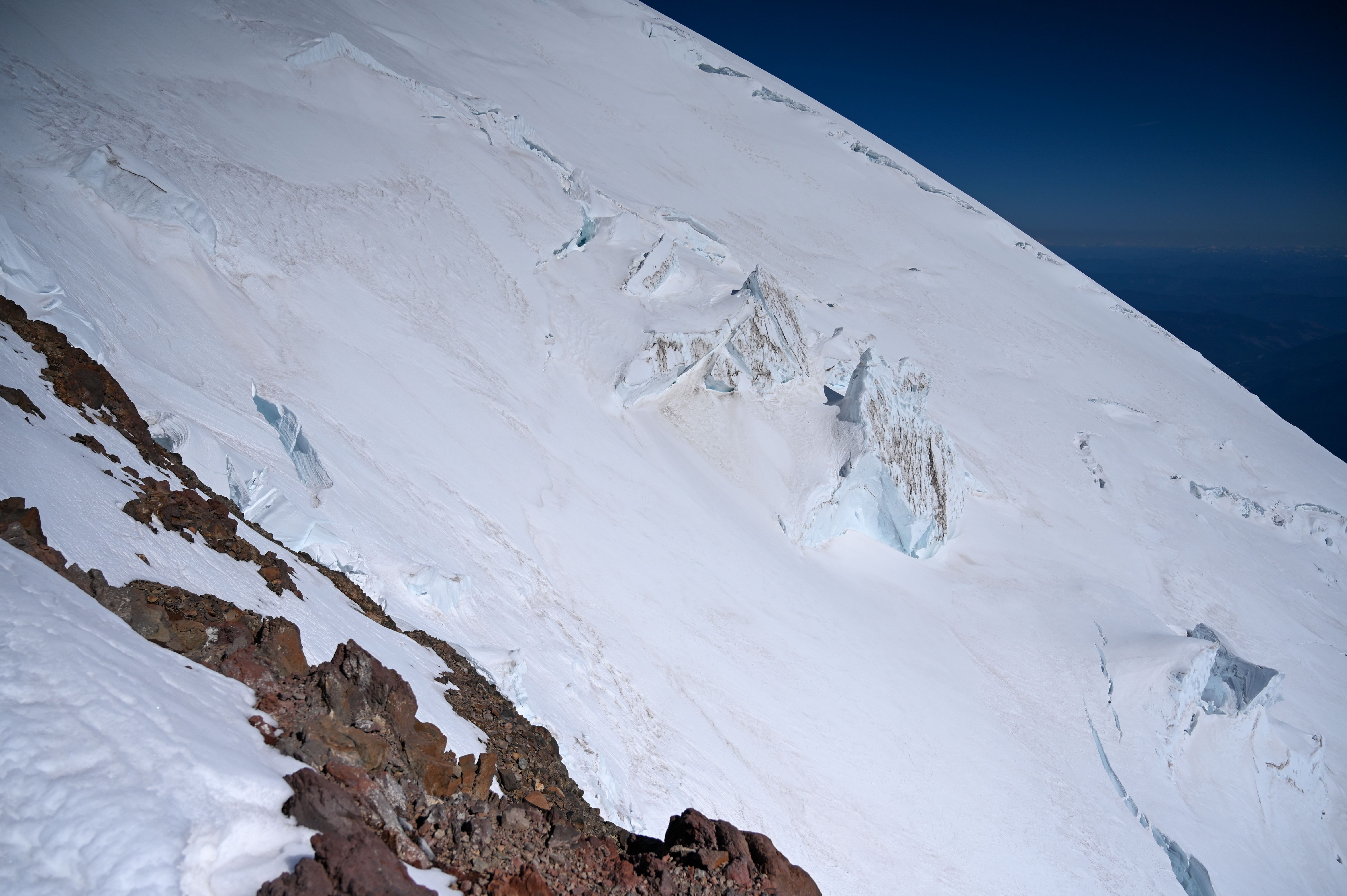
With Plans B and C in place, we continued upward and quickly entered the cloud, which had descended to meet us at roughly 13,000 feet. We trudged - err, I mean rest-stepped - upward through sleet and sustained 50 mph winds, finally arriving at the summit around 11:30 a.m.

Since this website is mostly about helping people make good decisions in the mountains, I feel the need to justify this one a little.
1. Winds: While the winds were strong, they were steady rather than gusty. Steady wind lets you lean in and keep climbing (within reason); gusts are what knock people over.
2. Whiteout: Traveling on a glacier in a whiteout is generally dumb, but in this case, we were on the DC - a wanded, shoveled trail maintained by Rainier’s guide services. I’d already guided the route several times that season and had GPX tracks for both the current and previous routes. Even off-trail, it would be hard to get truly lost here.
3. Temperature: Despite having to layer up in the wind, the freezing level was around 14,000 feet, so it wasn’t *as* cold as you might expect.
4. Team: I’ve climbed and skied with Lucas and Tim a lot over the years and trust them implicitly. This isn’t a decision I’d make with just anyone.
At the summit, we huddled in a fumarole and reassessed. The cloud was lower than expected, and visibility was poor but we’d seen it rise and fall on the east side and figured we might slip beneath it on the west. We resolved to descend no more than 1,000 feet on the west side before deciding.
As luck would have it: the cloud only extended a few hundred vertical feet down, and soon we could make out the massive roll of the Tahoma Glacier and the open slopes below. A bit of sun broke through – a fresh wind in our sails - and we transitioned to ski mode.
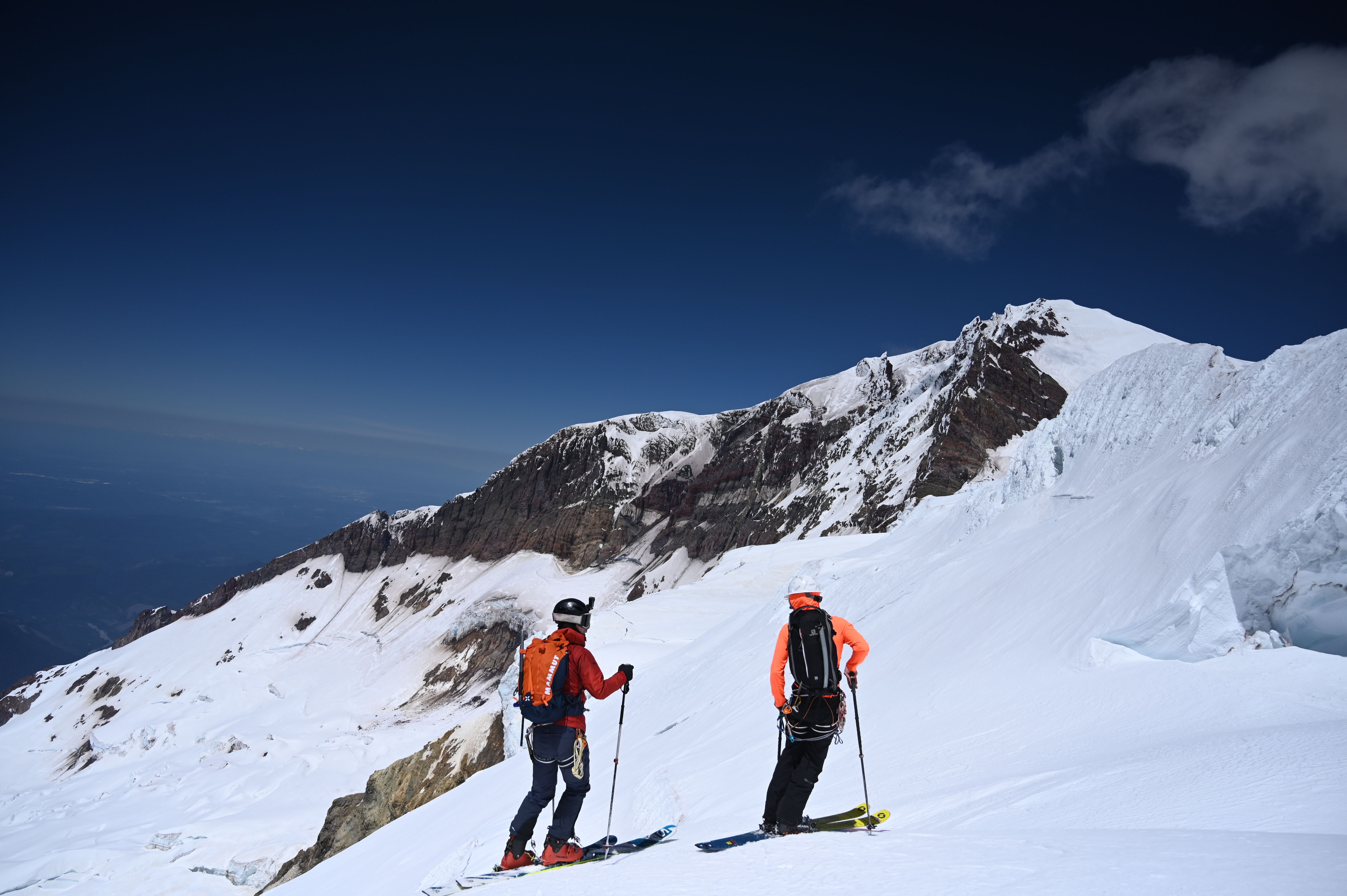
The first turns were chattery but manageable. At around 13,000 feet, we hit the main rollover and dropped into a series of broad panels separated by snow bridges and crevasses. The skiing wasn’t overly steep, but it was definitely consequential - any fall would likely end in a crevasse. We schussed, stopped, assessed, and hopped our way through the maze.

The Tahoma might take the prize for the most scenic of Rainier’s ski descents, flanked by building-sized seracs and enormous sub-peaks. Midway down, we hit the sweet spot: soft, edgeable corn which allowed for long, sweeping GS turns. Some excellent photos ensued.
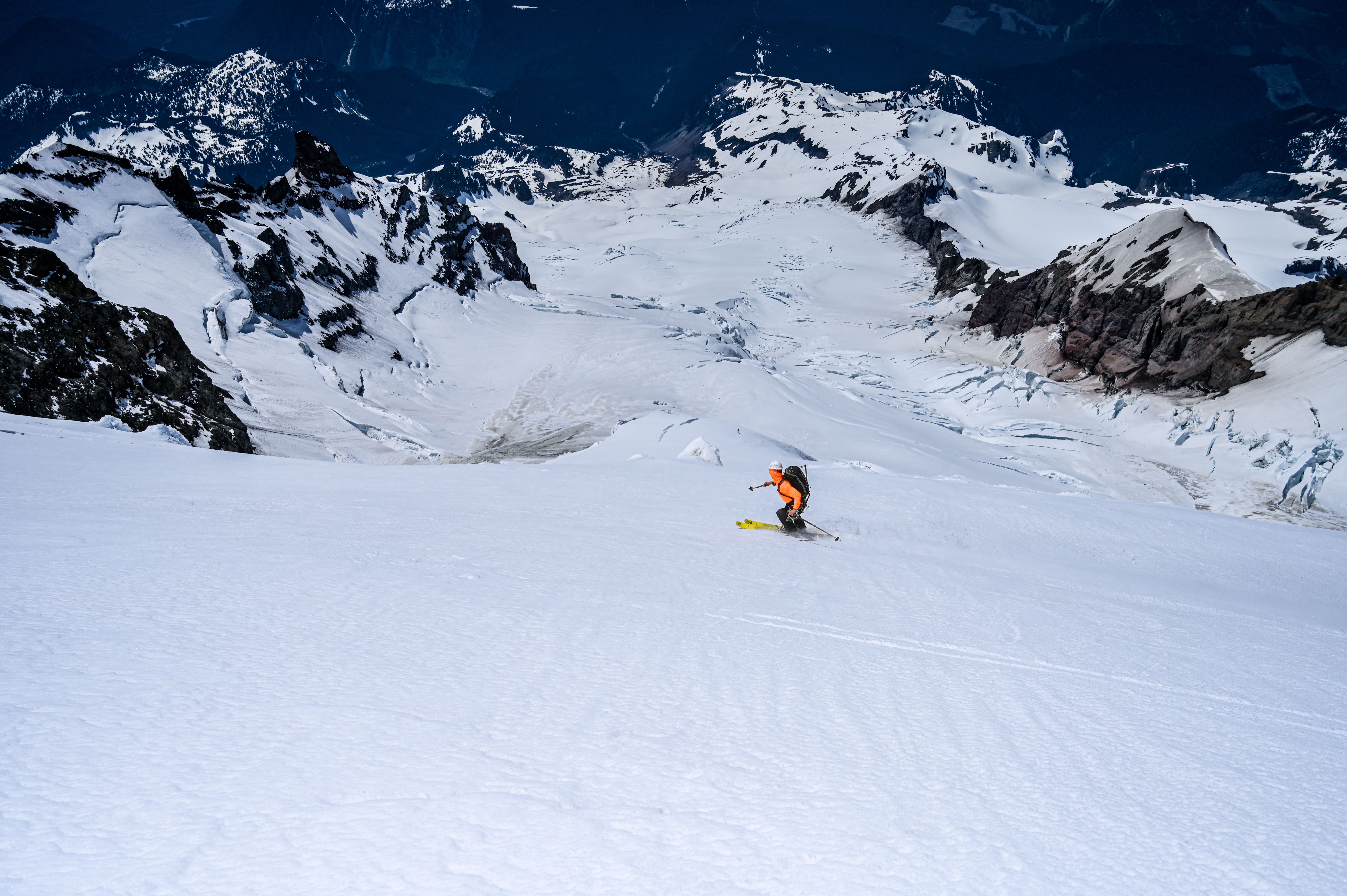
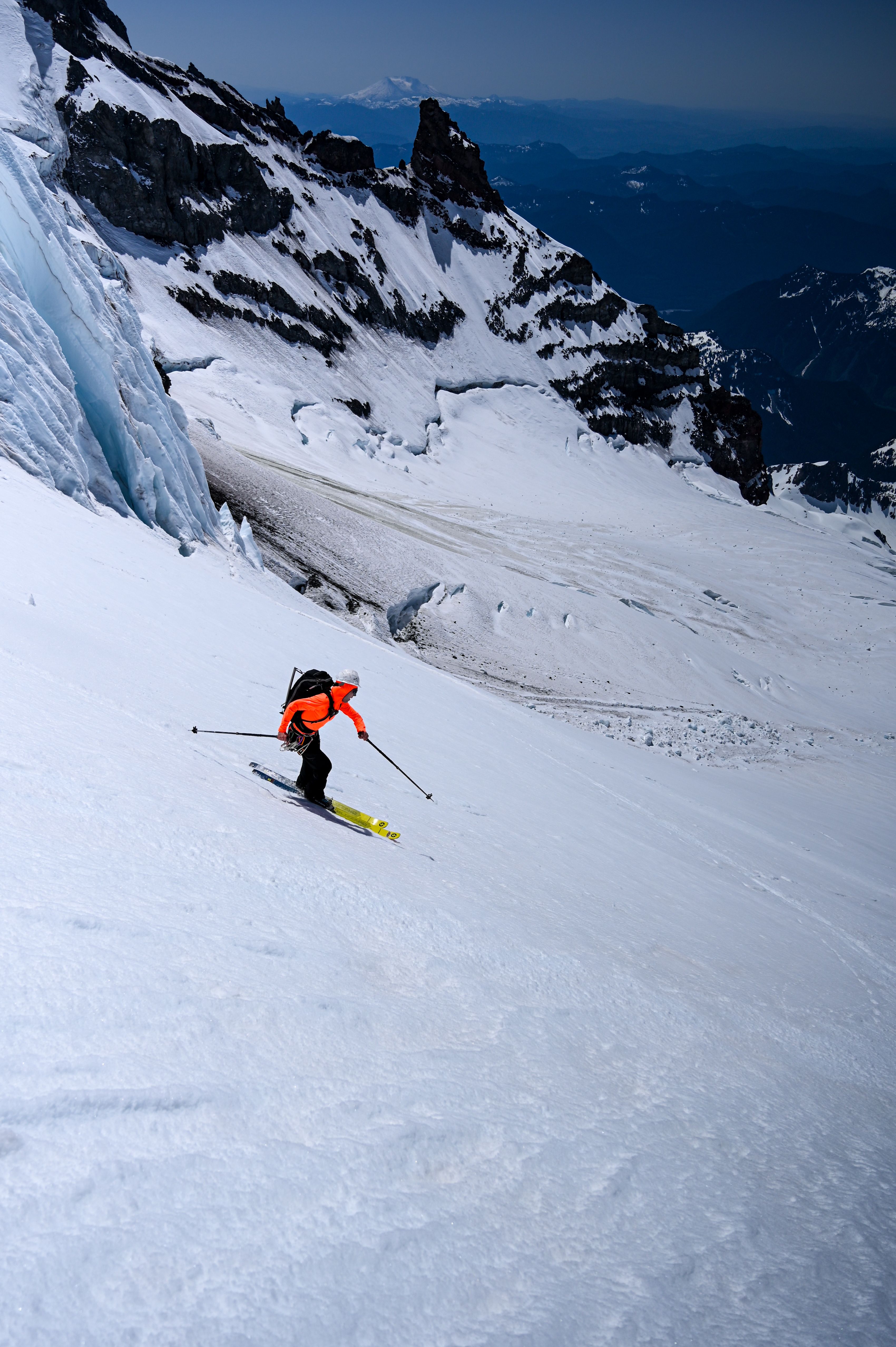
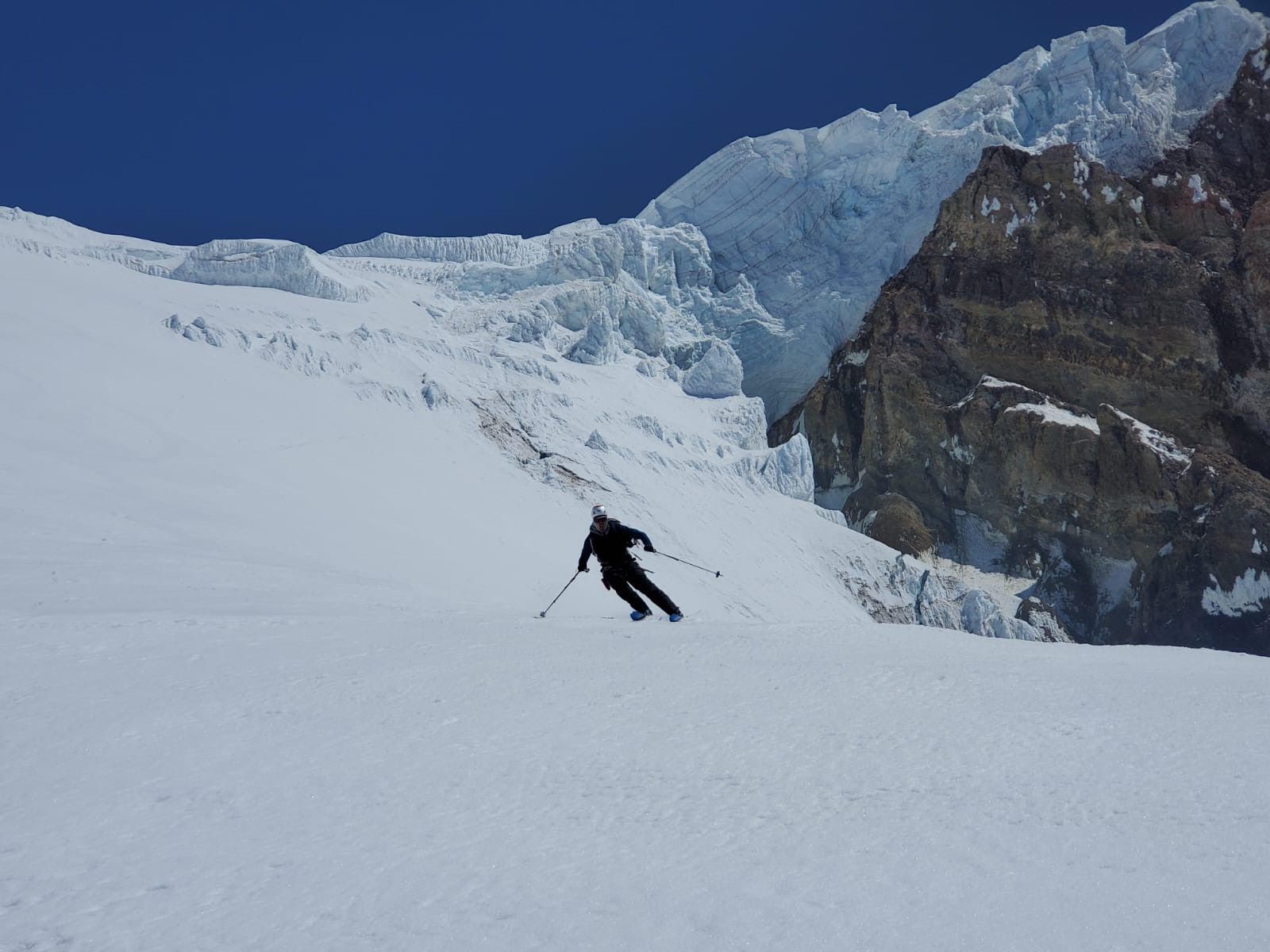
As we exited the most broken section of glacier, the snow turned to Elmer’s glue. We pinned our weight to the backs of our boots to stay upright in the quicksand below our skis. Lucas put on a particularly heroic display through this stretch – credit to his years of training on Mt. Hood.

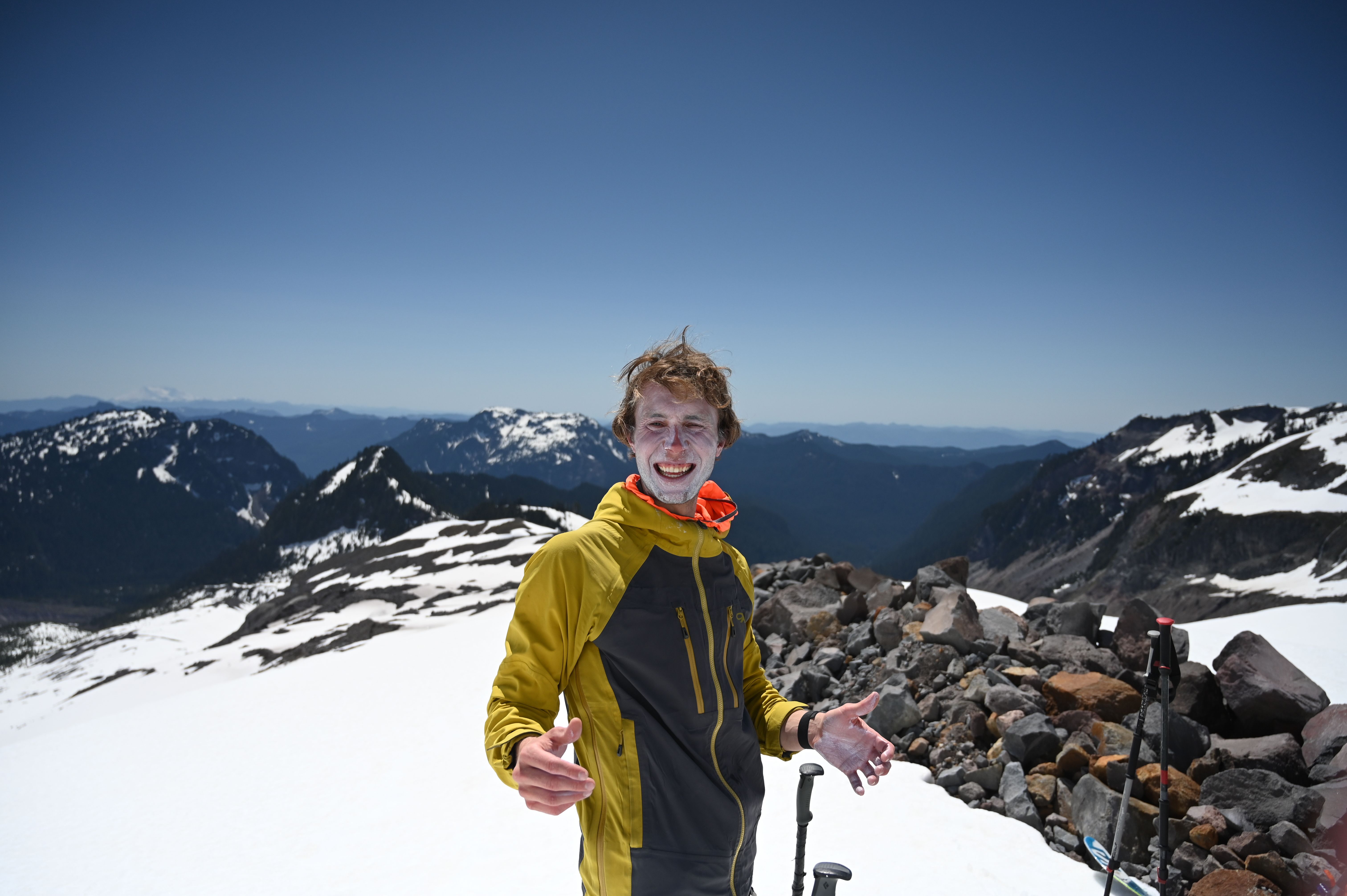
We picked our way down thinning snow patches until finally giving in and having a gear-splosion to fish out the approach shoes from the bottom of our packs.
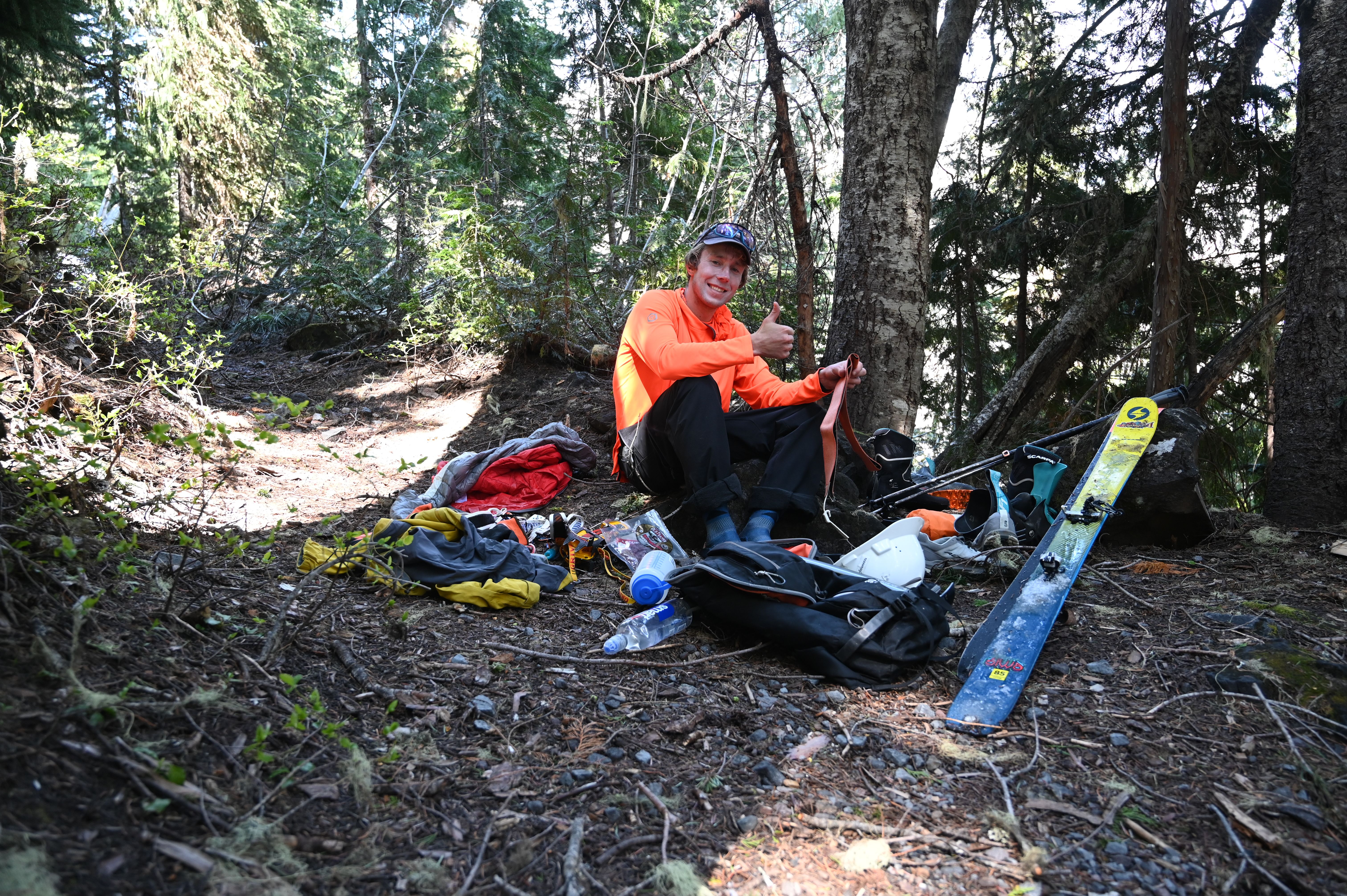
The walk out was blurry but beautiful, following the Tahoma Creek Trail and eventually the creek itself. This was one of my favorite parts of the day: we looked absolutely ridiculous stomping through the lush forest, flanked by a roaring creek, in our Gore-Tex with skis teetering on our packs. Lucas had worn a white construction helmet that now hung from his bag (long story), while Tim - ever the minimalist - kept his helmet on to save pack space. It’s probably good we didn’t run into many hikers; they’d have gotten the (correct) impression that all Washington climbers are a bit kooky.
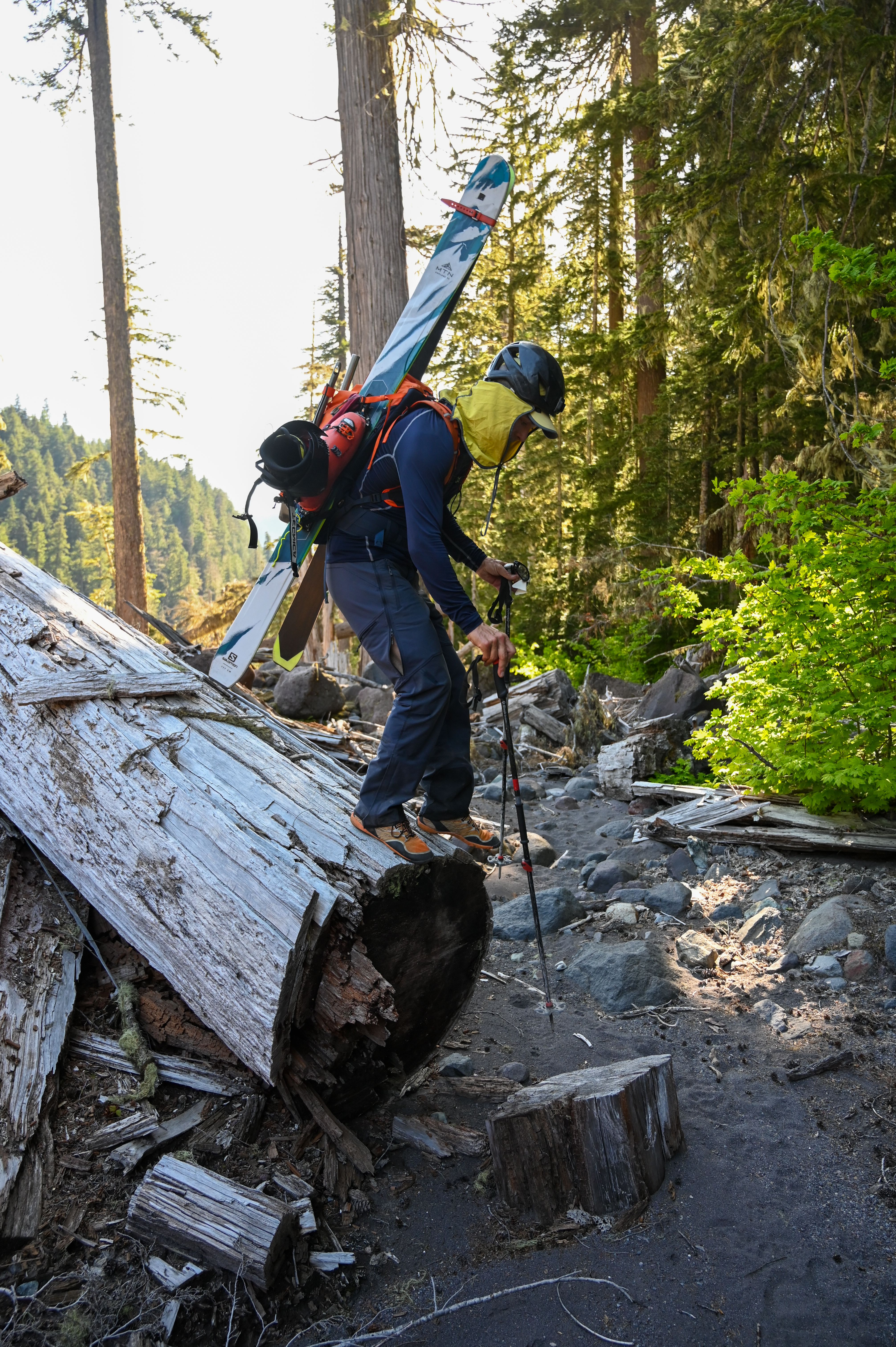
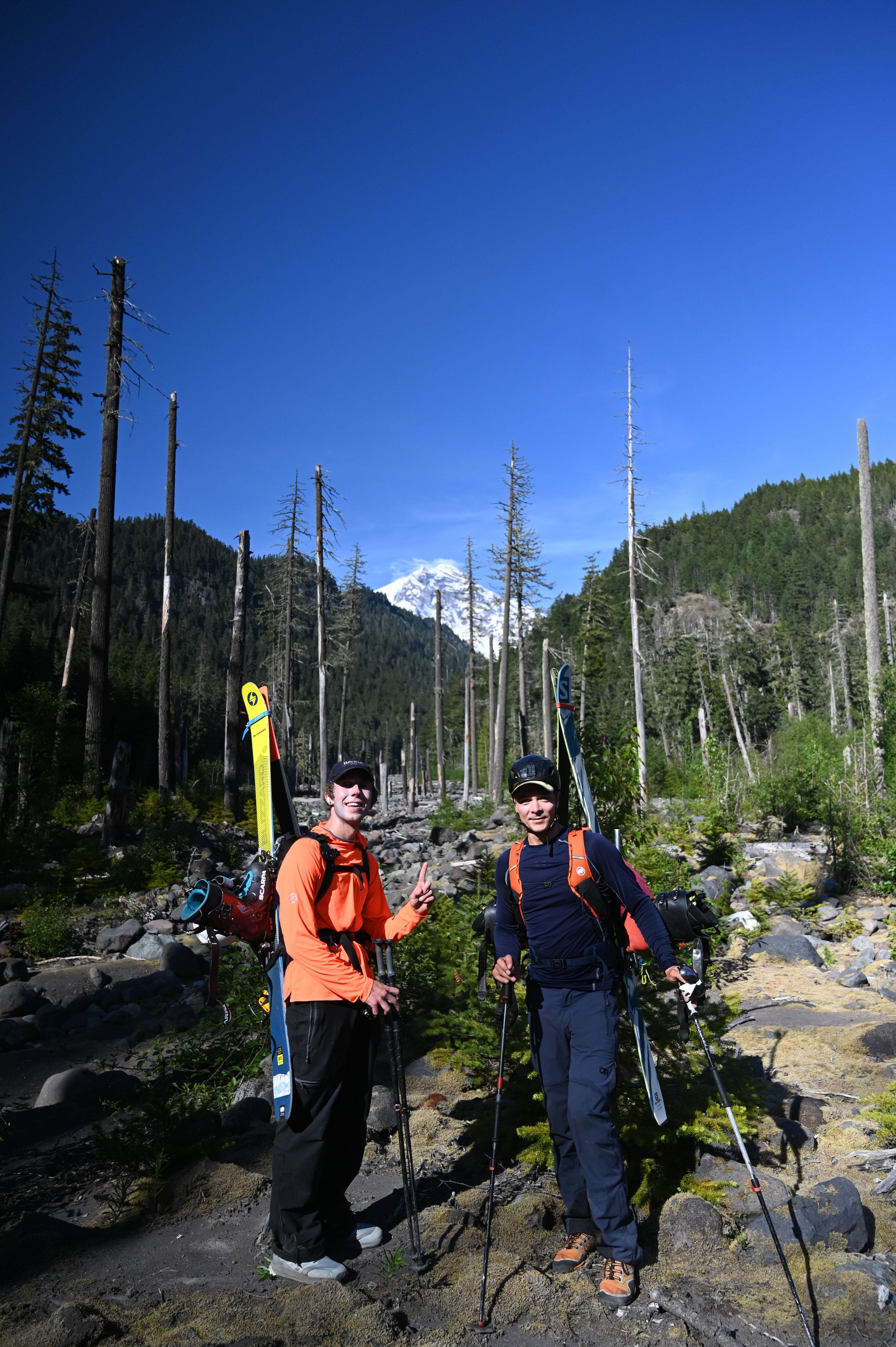
At the car, we high-fived, shared a beer, and made quick work of the car shuttle. I had work in the morning - another Rainier climb, this time with clients.
Only later did I realize my dad had completed the exact same traverse 22 years earlier. At first, I felt a little sheepish for not having read that trip report on Alpenglow.org. But as I compared his notes and photos with my late uncle Carl’s, I felt a deep sense of connection to both family and place.
Lowell and company had spent two nights on the mountain to catch ideal conditions and descended the Sickle rather than the central face of the Tahoma, but in every other way, our days were the same - each conceived independently and skied with close friends, 22 years apart almost to the day.
Comparing photos with Carl, I swelled with pride at our shared eye for the terrain and marveled at his ability to carry and operate a film camera on the same route.
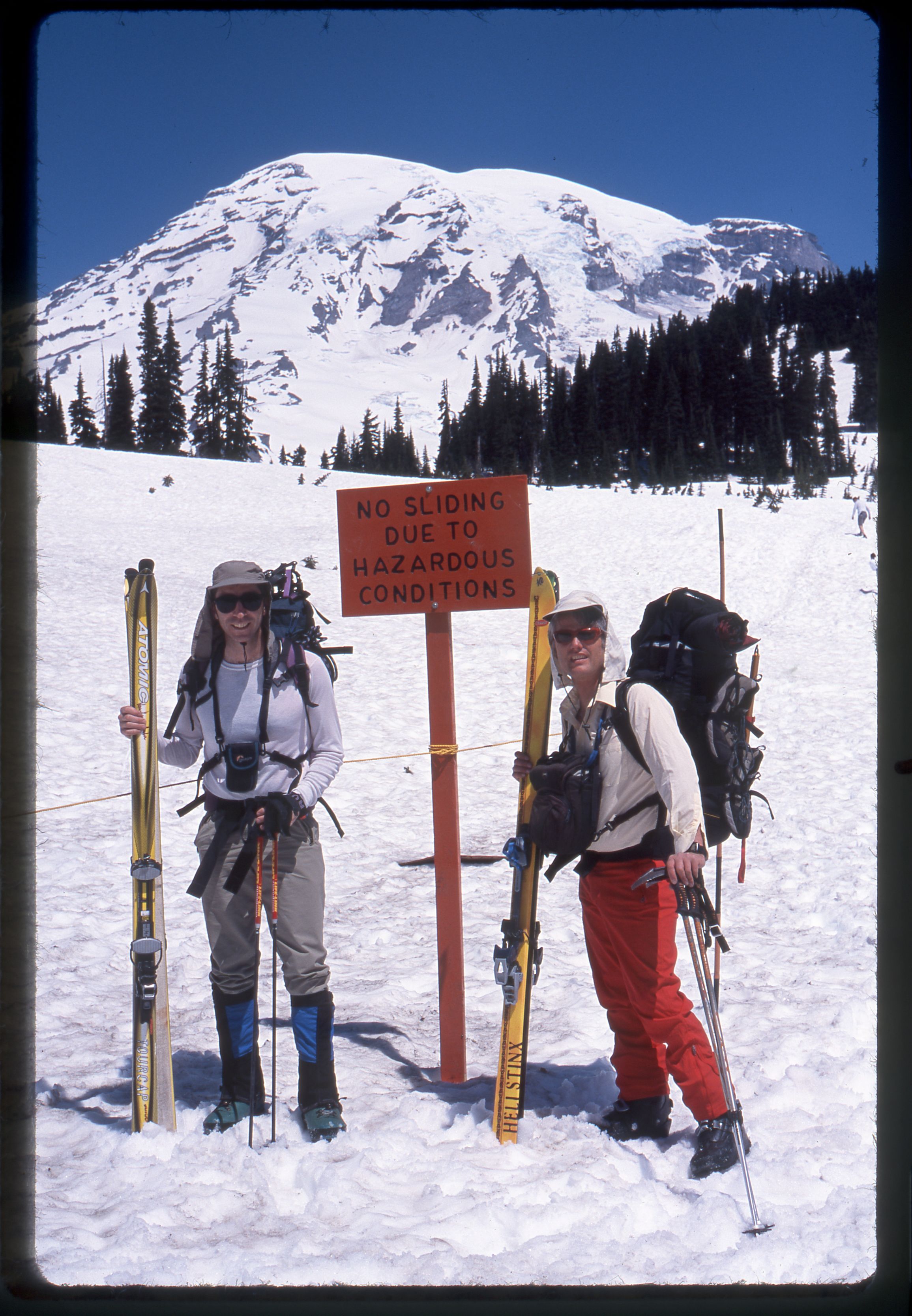
And here I thought my digital camera was heavy!
As usual, I’m in awe of the skill and love for the game shown by those who came before me. I can’t wait to keep exploring this state on skis.
Stay safe out there.
- Tom
P.S. It's been said that a picture is worth a thousand words. It follows that a video would be worth even more. If you enjoyed this trip report, be sure to check out Lucas and Tim's footage from the descent linked here and here.